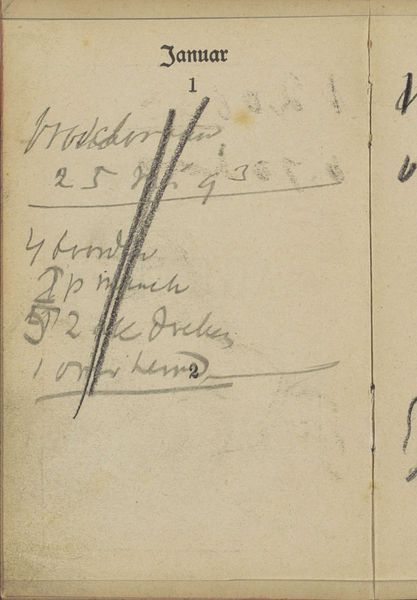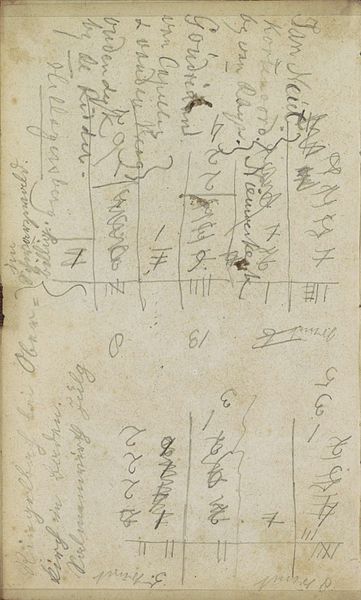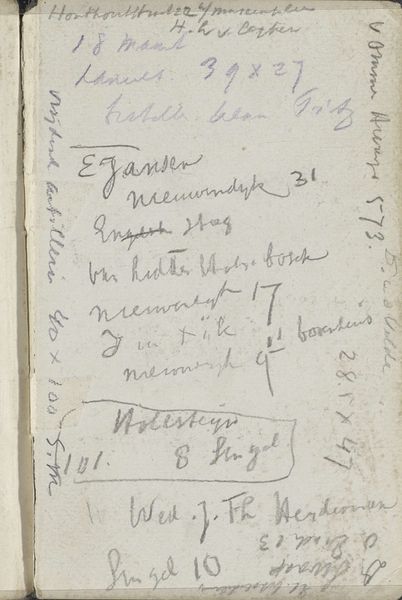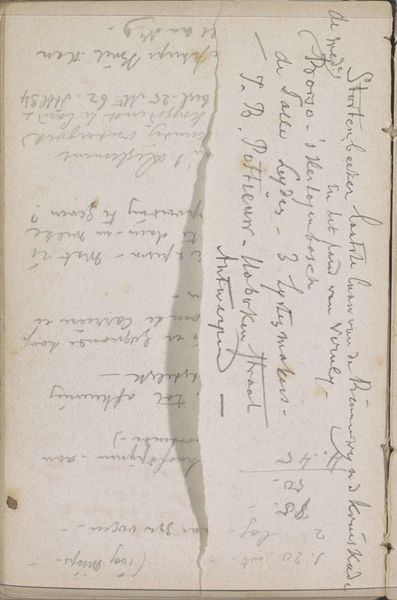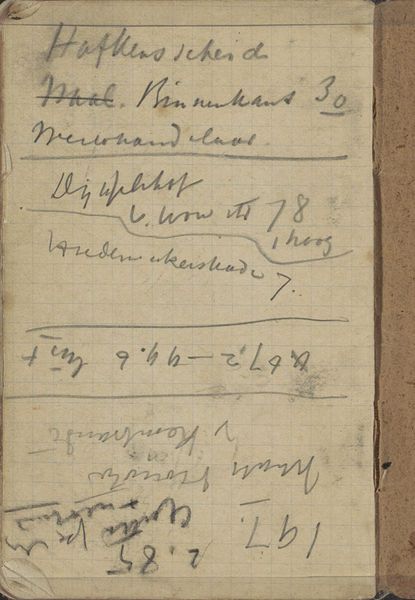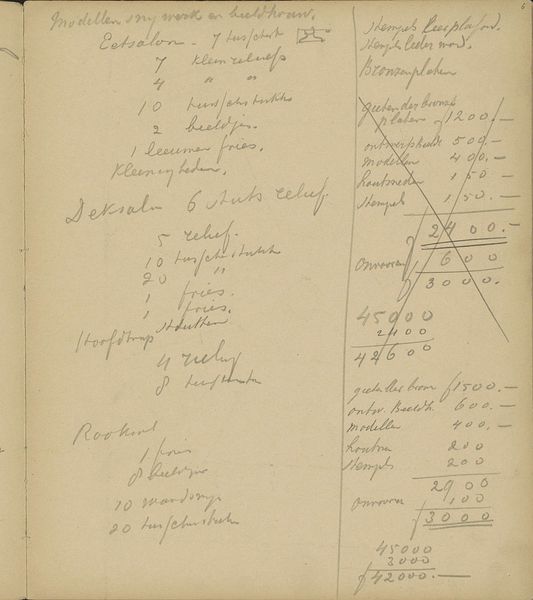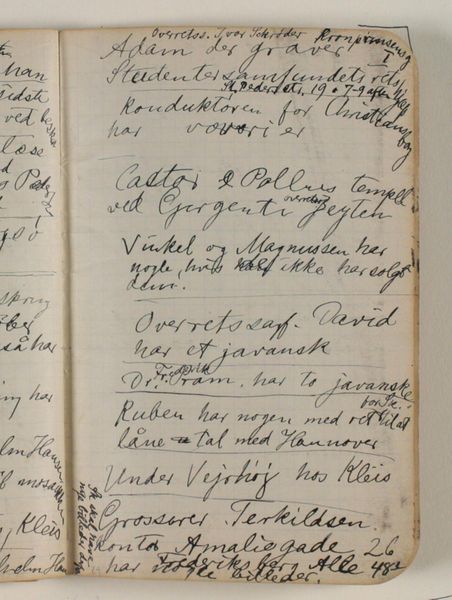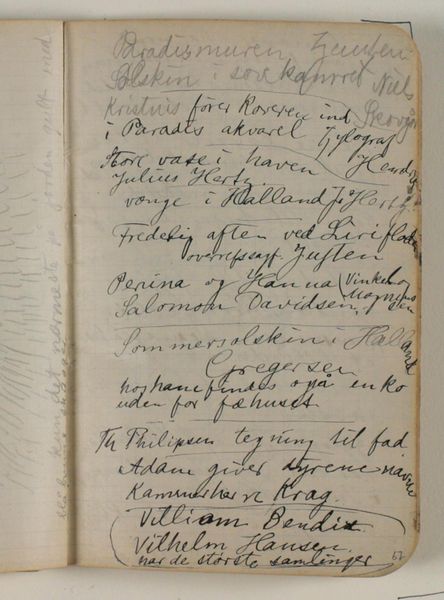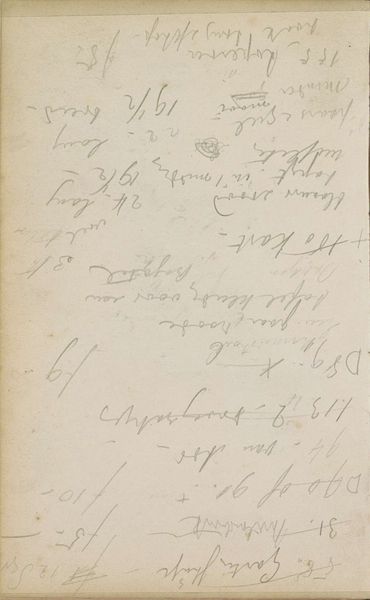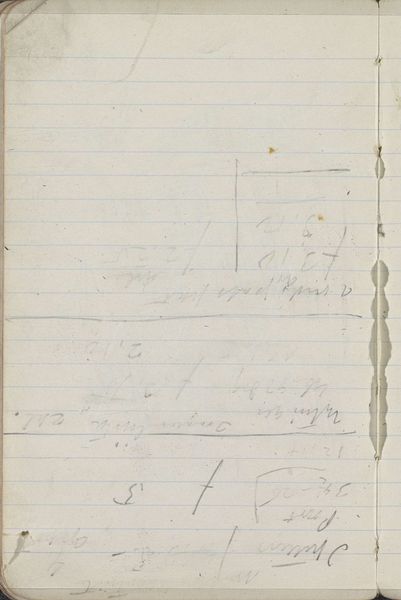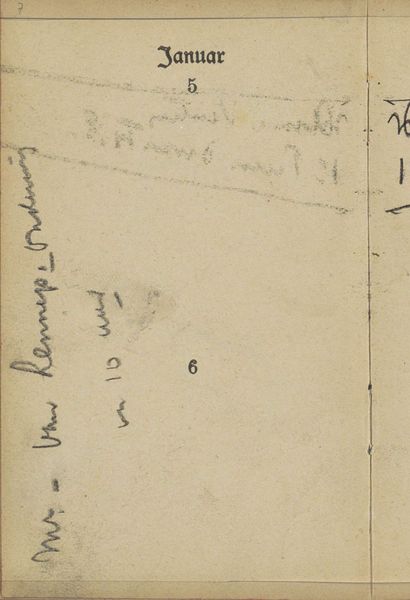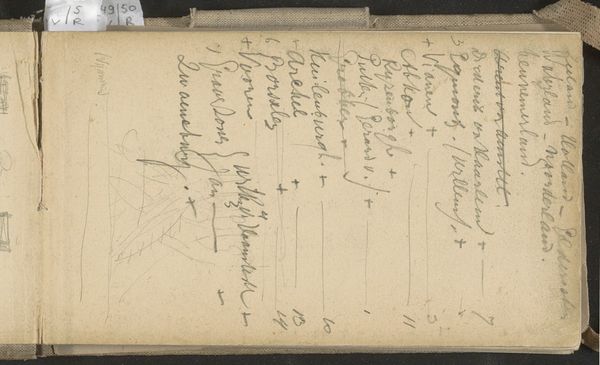
drawing, print, paper, ink
#
drawing
#
hand written
# print
#
paper
#
ink
#
hand-written
Copyright: Rijks Museum: Open Domain
Editor: This is *Lijst van uitgaven*, or "List of expenses", by Jan Willem van Borselen, made between 1869 and 1870. It’s a drawing, using ink on paper and it appears to also be a print, and I immediately notice all this striking handwriting crossed out. How do you interpret this work? Curator: I see a ledger, a material manifestation of daily transactions. These mundane records often unveil deeper cultural narratives. Who held the pen? Whose labor is accounted for in these transactions, and whose is omitted? Are the cross-outs evidence of corrections, of debts settled, or of something more obscured, perhaps the effacement of someone's contribution? Editor: That's a powerful reading! I hadn’t considered the social implications of something as simple as an expense list. I was more focused on the visual element of the crossed-out words. Curator: Precisely! The visual act of crossing out, of erasure, has political implications. Who controls the narrative, and who has the power to write, record, and erase? How does gender, race, or economic standing play into whose contributions are visible, or rather, deliberately made invisible? Editor: It’s like the ledger itself is a battleground. Do you think Borselen was making a statement by creating an artwork out of such an everyday item? Curator: Perhaps he intended to elevate the unseen labour that underpinned his society, while also asking viewers to examine their own complicity within it. We're forced to confront the realities behind seemingly simple accounting, asking how such systems have historically perpetuated inequity. Editor: Wow, I’ll definitely look at everyday records differently now. There’s a whole story in what's included - and excluded. Curator: And in what's been crossed out. The erasures tell a story too.
Comments
No comments
Be the first to comment and join the conversation on the ultimate creative platform.
